
For candy makers, there are certain red-letter days during the year, like Easter and Valentine’s Day, that they hope will produce a cascade of revenue. Another such day is just around the corner — Halloween. On All Hallow’s Eve, kids dress up as their favorite ghoul or superhero, go trick-or-treating, and, of course, eat lots of candy. As do adults.
So residents of what states have the biggest sweet tooth? To approximate spending on sweets, 24/7 Wall St. estimated and adjusted to the population the number of candy stores and chocolate shops in each state.
Data on candy stores was obtained from Yelp! We included the three most popular candies in each state from CandyStore.com, the economic output of each state’s sugar industry from the National Confectioners Association, as well as the share of each state’s population under 14 years old from the Census.
Click here to see the states spending the most on sweets.
Click here to read our detailed findings and full methodology.
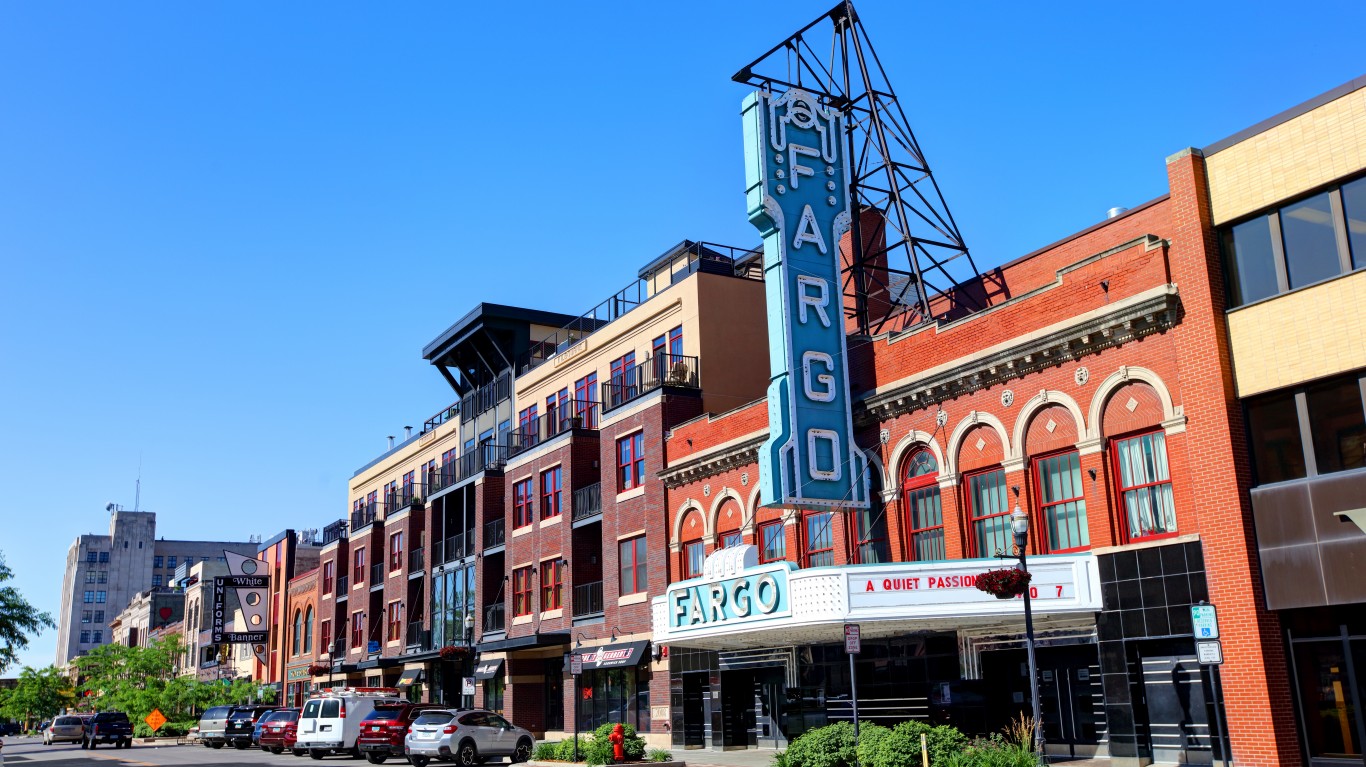
50. North Dakota
> Candy and chocolate shops: 1.6 per 100,000 people
> Most popular candies: Hot Tamales, Jolly Ranchers, Candy Corn
> Sugar industry economic output: $40.0 million (2nd lowest)
> Population under 14 years: 19.7% (13th highest)
[in-text-ad]

49. Connecticut
> Candy and chocolate shops: 1.9 per 100,000 people
> Most popular candies: Almond Joy, Milky Way, M&M’s
> Sugar industry economic output: $407.0 million (25th highest)
> Population under 14 years: 16.8% (7th lowest)

48. Arkansas
> Candy and chocolate shops: 1.9 per 100,000 people
> Most popular candies: Jolly Ranchers, Hot Tamales, Butterfinger
> Sugar industry economic output: $208.0 million (17th lowest)
> Population under 14 years: 19.5% (15th highest)

47. New Jersey
> Candy and chocolate shops: 2.0 per 100,000 people
> Most popular candies: Skittles, M&M’s, Tootsie Pops
> Sugar industry economic output: $2000.0 million (4th highest)
> Population under 14 years: 18.1% (14th lowest)
[in-text-ad-2]

46. Michigan
> Candy and chocolate shops: 2.0 per 100,000 people
> Most popular candies: Candy Corn, Starburst, Skittles
> Sugar industry economic output: $685.0 million (18th highest)
> Population under 14 years: 17.9% (13th lowest)
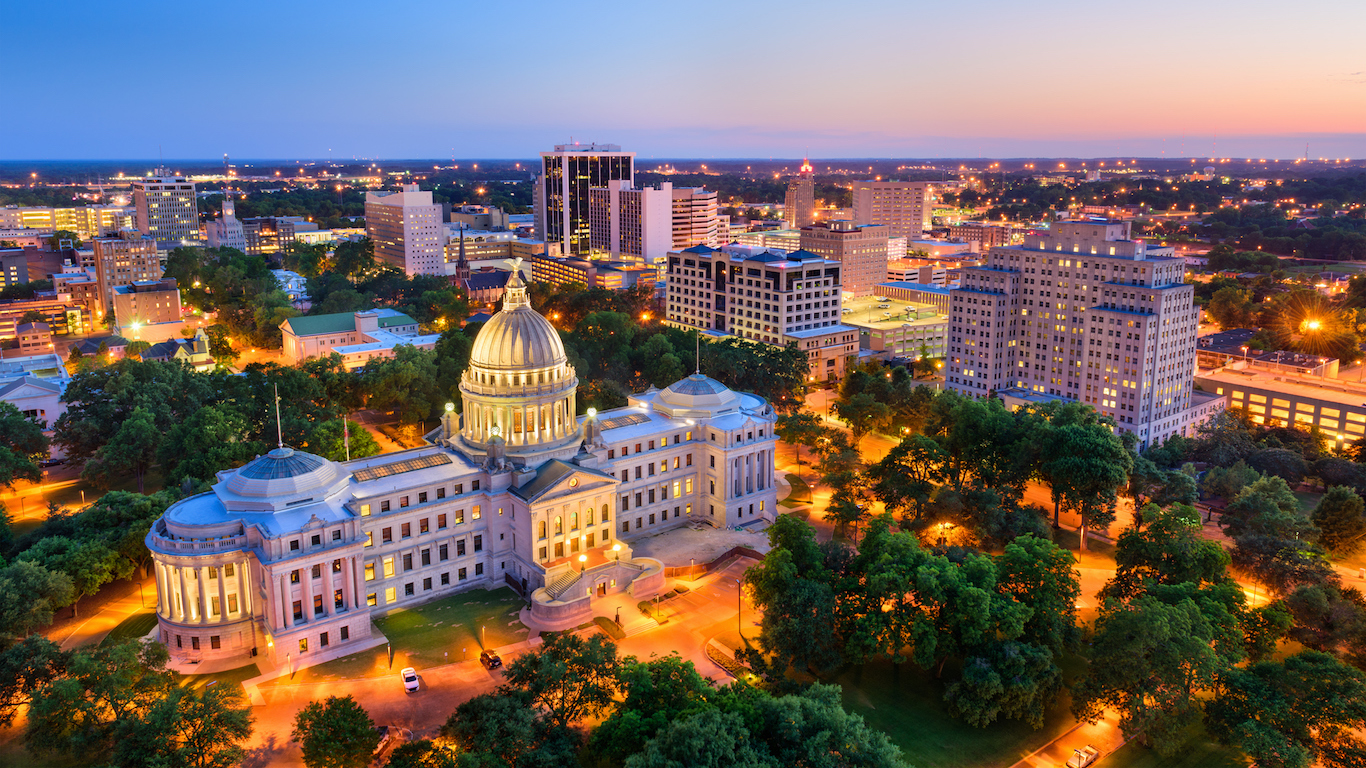
45. Mississippi
> Candy and chocolate shops: 2.1 per 100,000 people
> Most popular candies: 3 Musketeers, Snickers, Butterfinger
> Sugar industry economic output: $97.0 million (11th lowest)
> Population under 14 years: 19.8% (11th highest)
[in-text-ad]

44. Texas
> Candy and chocolate shops: 2.1 per 100,000 people
> Most popular candies: Reese’s Peanut Butter Cups, Starburst, Almond Joy
> Sugar industry economic output: $1000.0 million (8th highest)
> Population under 14 years: 21.7% (2nd highest)

43. Alabama
> Candy and chocolate shops: 2.1 per 100,000 people
> Most popular candies: Candy Corn, Tootsie Pops, Hershey’s Mini Bars
> Sugar industry economic output: $212.0 million (18th lowest)
> Population under 14 years: 18.5% (23rd lowest)

42. West Virginia
> Candy and chocolate shops: 2.1 per 100,000 people
> Most popular candies: Blow Pops, Milky Way, Hershey’s Mini Bars
> Sugar industry economic output: $46.0 million (4th lowest)
> Population under 14 years: 17.1% (8th lowest)
[in-text-ad-2]
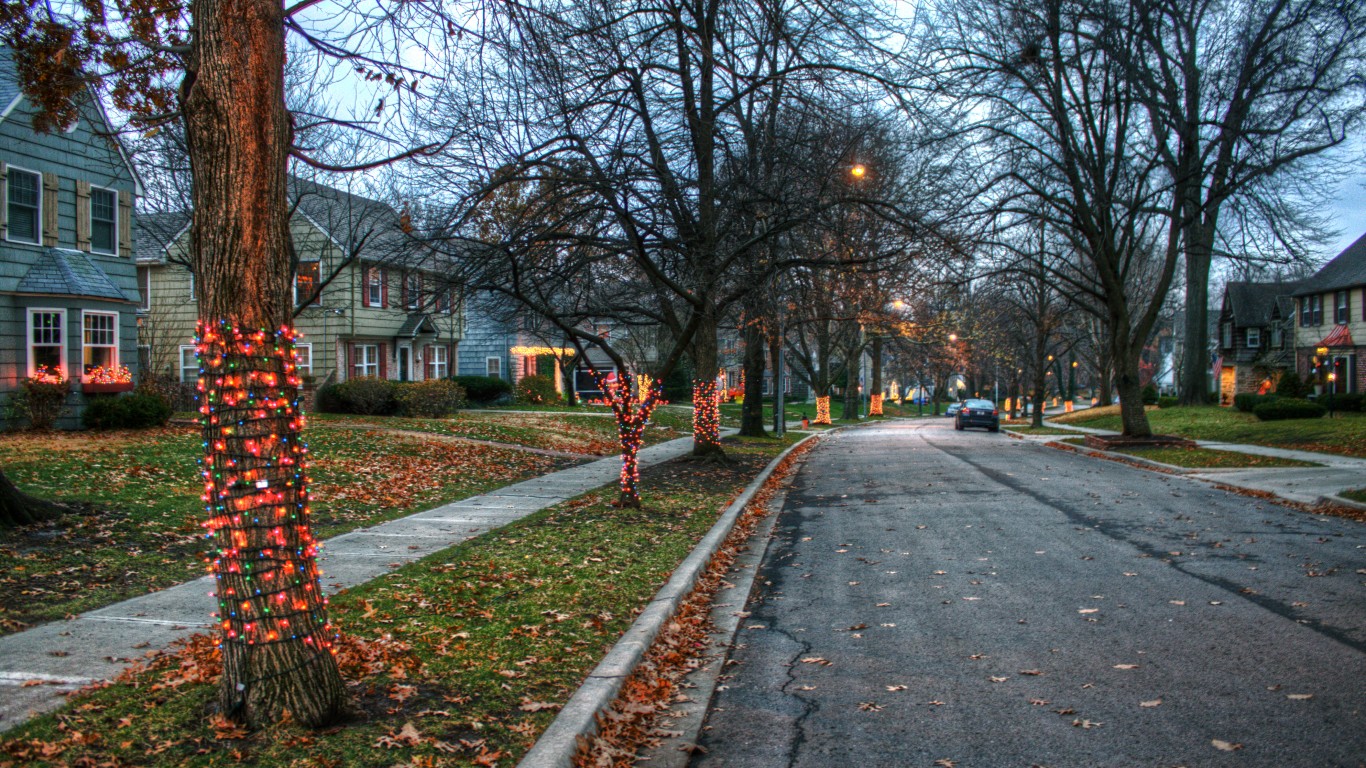
41. Kansas
> Candy and chocolate shops: 2.3 per 100,000 people
> Most popular candies: Reese’s Peanut Butter Cups, M&M’s, Snickers
> Sugar industry economic output: $257.0 million (22nd lowest)
> Population under 14 years: 20.4% (7th highest)

40. Florida
> Candy and chocolate shops: 2.4 per 100,000 people
> Most popular candies: Snickers, Skittles, Reese’s Cups
> Sugar industry economic output: $1000.0 million (8th highest)
> Population under 14 years: 16.5% (6th lowest)
[in-text-ad]

39. Arizona
> Candy and chocolate shops: 2.5 per 100,000 people
> Most popular candies: Snickers, Hot Tamales, Hershey Kisses
> Sugar industry economic output: $226.0 million (20th lowest)
> Population under 14 years: 19.3% (19th highest)

38. Wisconsin
> Candy and chocolate shops: 2.5 per 100,000 people
> Most popular candies: Butterfinger, Starburst, Hot Tamales
> Sugar industry economic output: $2000.0 million (4th highest)
> Population under 14 years: 18.2% (18th lowest)

37. South Dakota
> Candy and chocolate shops: 2.6 per 100,000 people
> Most popular candies: Starburst, Candy Corn, Jolly Ranchers
> Sugar industry economic output: $44.0 million (3rd lowest)
> Population under 14 years: 20.6% (6th highest)
[in-text-ad-2]
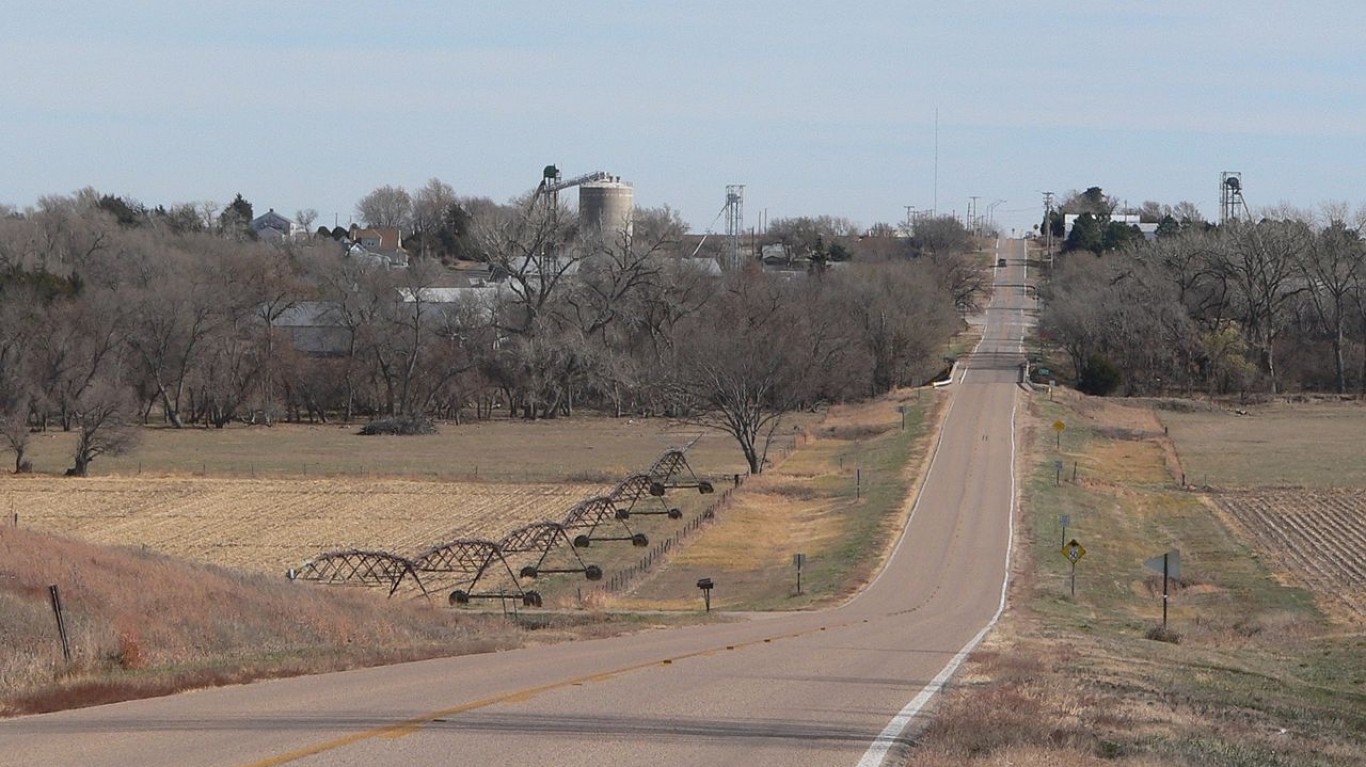
36. Nebraska
> Candy and chocolate shops: 2.6 per 100,000 people
> Most popular candies: Salt Water Taffy, Sour Patch Kids, Twix
> Sugar industry economic output: $85.0 million (9th lowest)
> Population under 14 years: 20.8% (5th highest)

35. Georgia
> Candy and chocolate shops: 2.7 per 100,000 people
> Most popular candies: Jolly Ranchers, Swedish Fish, Hershey Kisses
> Sugar industry economic output: $1000.0 million (8th highest)
> Population under 14 years: 19.9% (10th highest)
[in-text-ad]
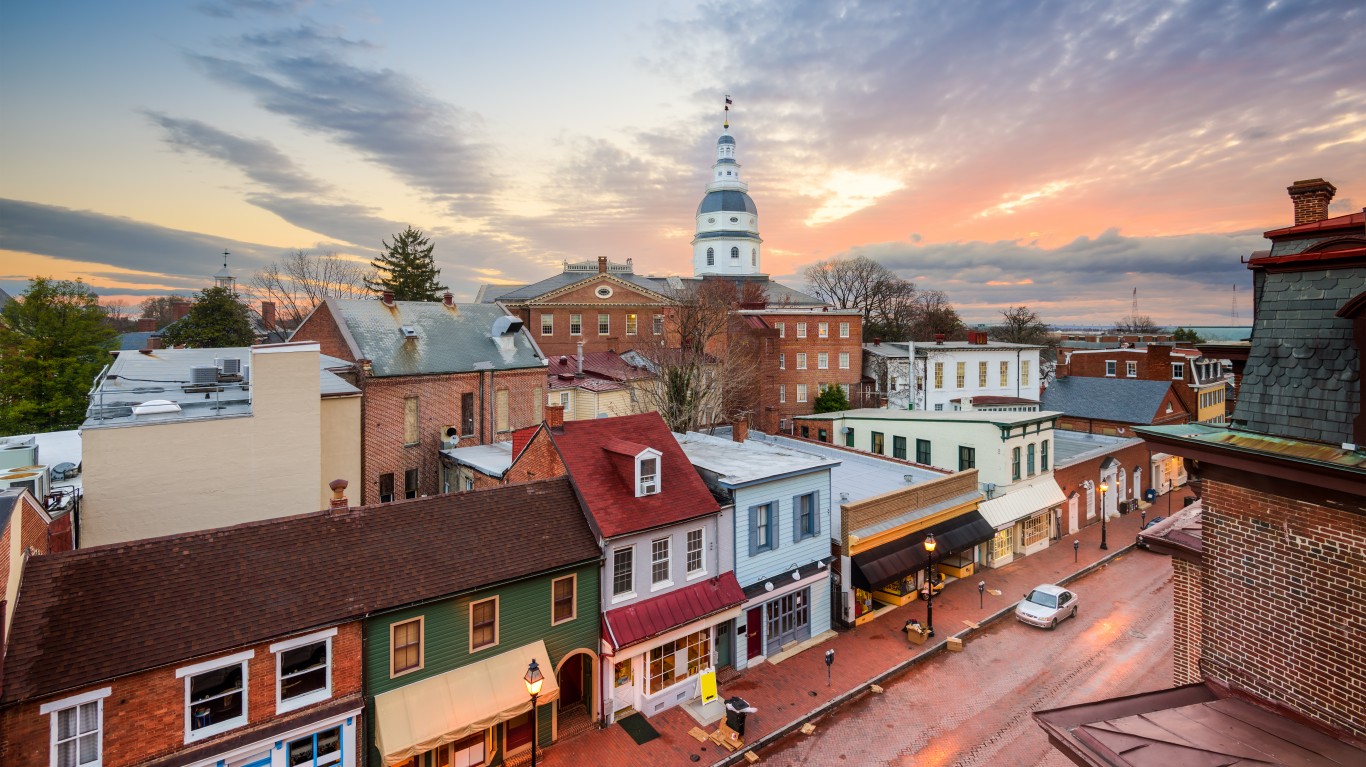
34. Maryland
> Candy and chocolate shops: 2.7 per 100,000 people
> Most popular candies: Milky Way, Reese’s Cups, Hershey Kisses
> Sugar industry economic output: $565.0 million (20th highest)
> Population under 14 years: 18.4% (21st lowest)

33. Kentucky
> Candy and chocolate shops: 2.7 per 100,000 people
> Most popular candies: Swedish Fish, Tootsie Pops, Reese’s Cups
> Sugar industry economic output: $354.0 million (24th lowest)
> Population under 14 years: 18.9% (22nd highest)

32. Virginia
> Candy and chocolate shops: 2.8 per 100,000 people
> Most popular candies: Hot Tamales, Snickers, Tootsie Pops
> Sugar industry economic output: $1000.0 million (8th highest)
> Population under 14 years: 18.3% (19th lowest)
[in-text-ad-2]
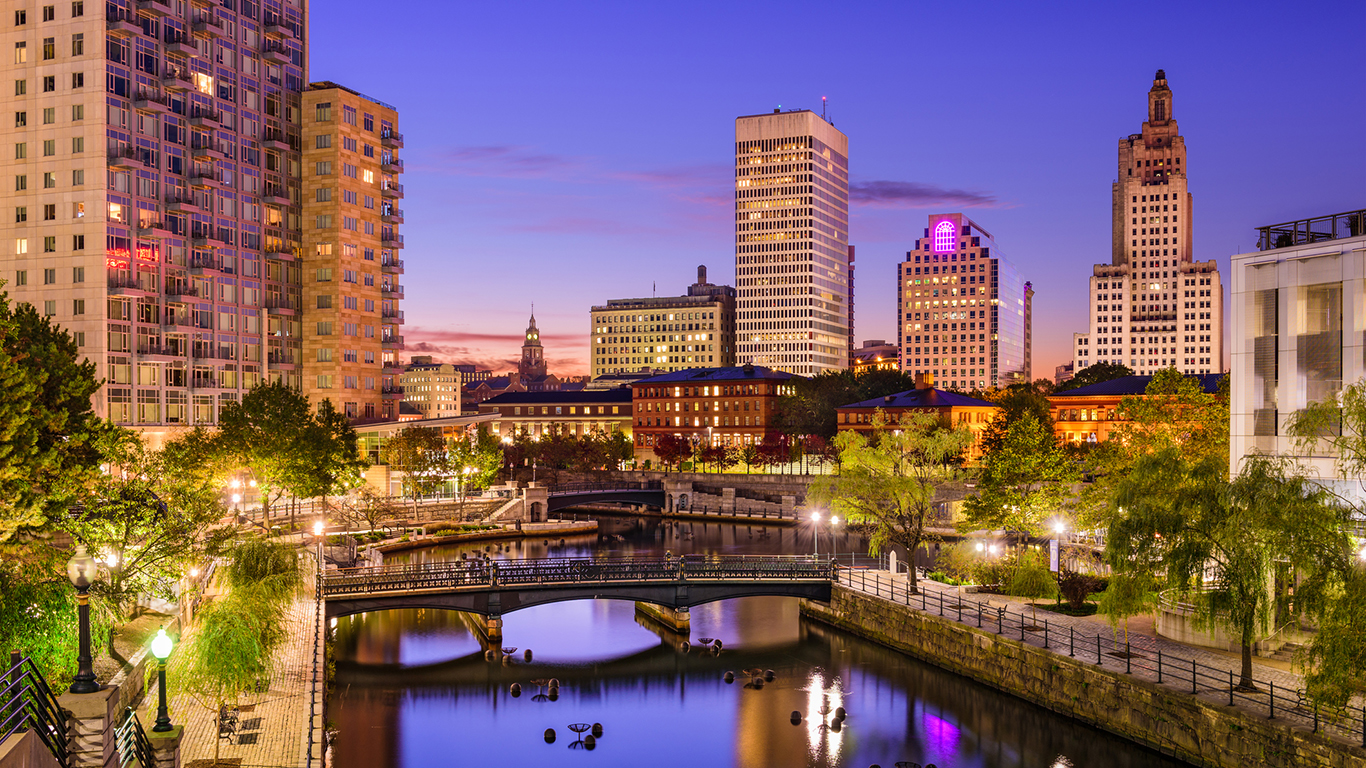
31. Rhode Island
> Candy and chocolate shops: 2.8 per 100,000 people
> Most popular candies: Candy Corn, Twix, M&M’s
> Sugar industry economic output: $60.0 million (6th lowest)
> Population under 14 years: 16.0% (4th lowest)
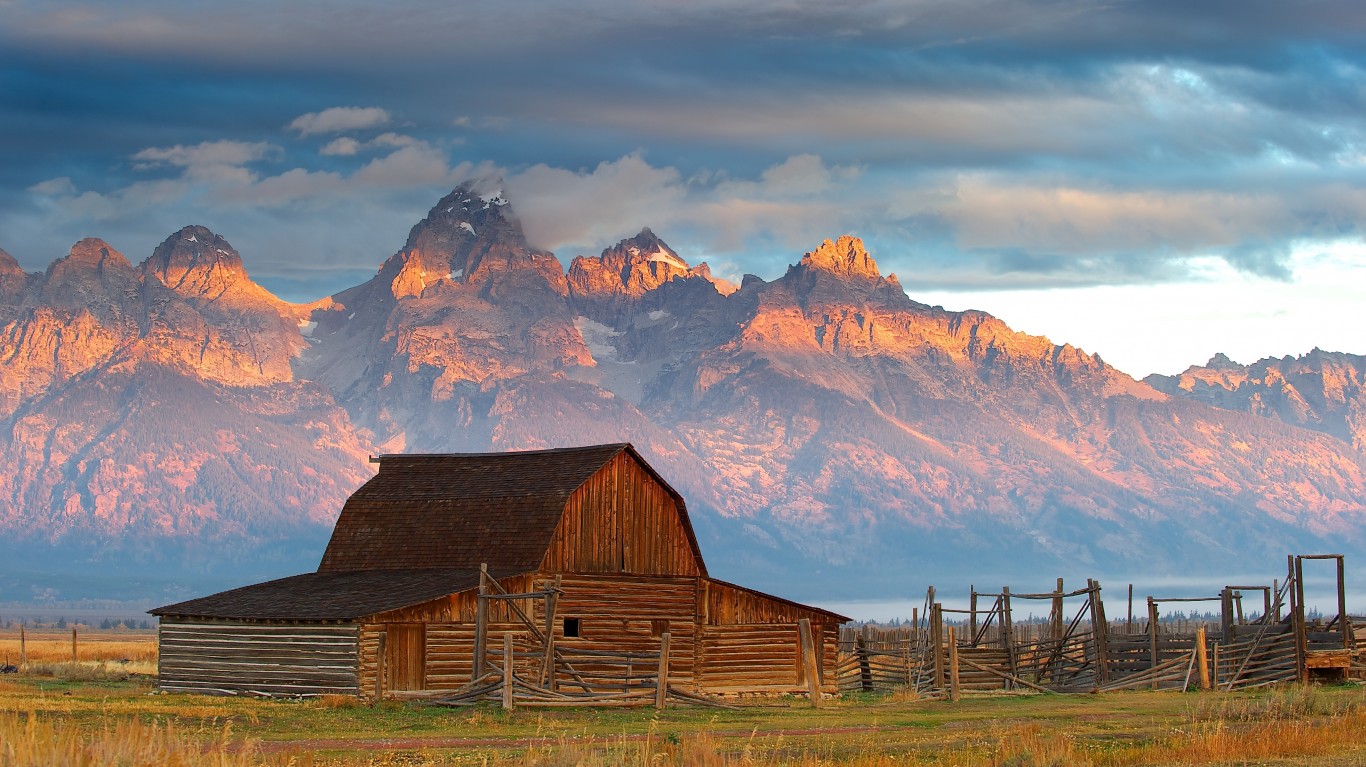
30. Wyoming
> Candy and chocolate shops: 2.9 per 100,000 people
> Most popular candies: Reese’s Peanut Butter Cups, Salt Water Taffy, Dubble Bubble Gum
> Sugar industry economic output: $30.0 million (the lowest)
> Population under 14 years: 20.1% (9th highest)
[in-text-ad]
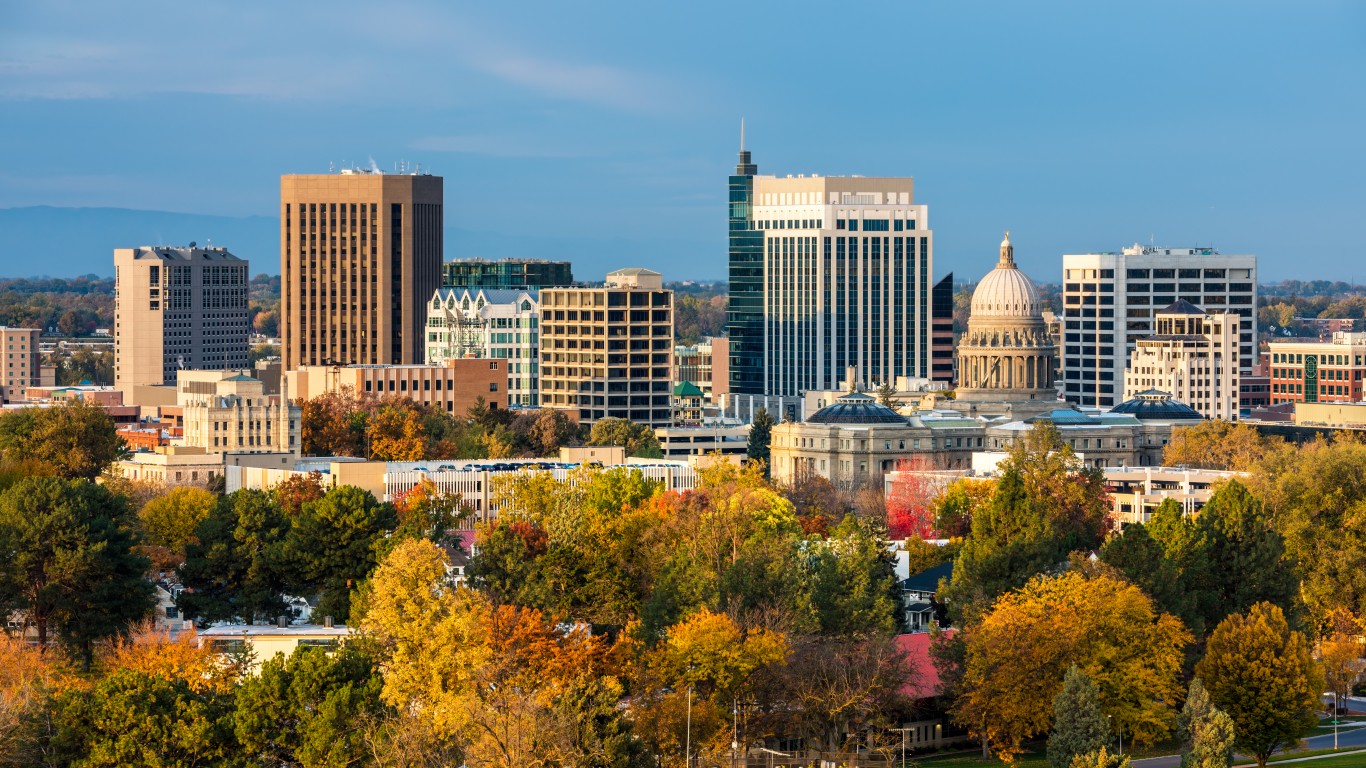
29. Idaho
> Candy and chocolate shops: 3.0 per 100,000 people
> Most popular candies: Candy Corn, Starburst, Snickers
> Sugar industry economic output: $100.0 million (12th lowest)
> Population under 14 years: 21.4% (3rd highest)

28. North Carolina
> Candy and chocolate shops: 3.0 per 100,000 people
> Most popular candies: M&M’s, Reese’s Cups, Snickers
> Sugar industry economic output: $518.0 million (21st highest)
> Population under 14 years: 18.5% (22nd lowest)

27. Oklahoma
> Candy and chocolate shops: 3.0 per 100,000 people
> Most popular candies: Dubble Bubble Gum, Snickers, Skittles
> Sugar industry economic output: $129.0 million (13th lowest)
> Population under 14 years: 20.4% (8th highest)
[in-text-ad-2]
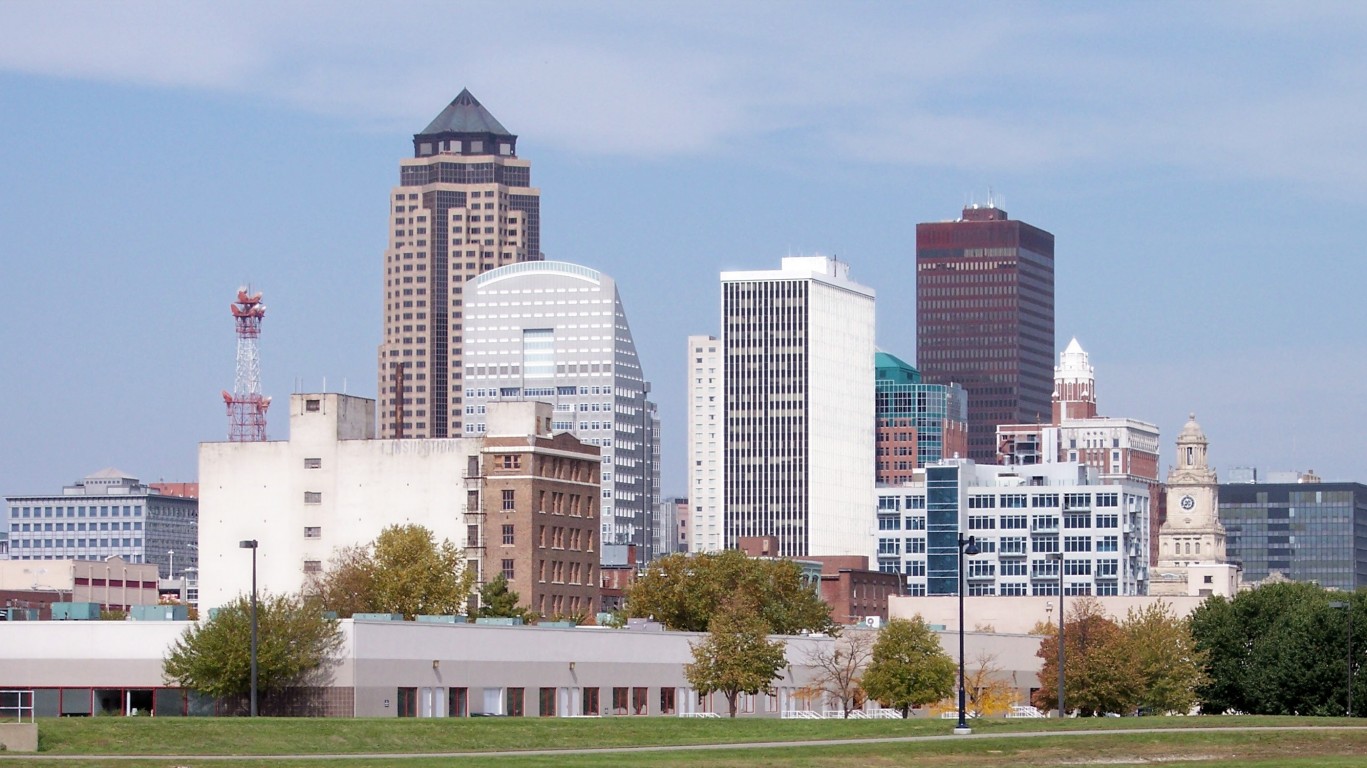
26. Iowa
> Candy and chocolate shops: 3.0 per 100,000 people
> Most popular candies: Candy Corn, M&M’s, Reese’s Cups
> Sugar industry economic output: $417.0 million (24th highest)
> Population under 14 years: 19.3% (18th highest)

25. Massachusetts
> Candy and chocolate shops: 3.0 per 100,000 people
> Most popular candies: Sour Patch Kids, Butterfinger, Dubble Bubble Gum
> Sugar industry economic output: $1000.0 million (8th highest)
> Population under 14 years: 16.3% (5th lowest)
[in-text-ad]

24. Montana
> Candy and chocolate shops: 3.2 per 100,000 people
> Most popular candies: Dubble Bubble Gum, Twix, M&M’s
> Sugar industry economic output: $71.0 million (7th lowest)
> Population under 14 years: 18.2% (17th lowest)
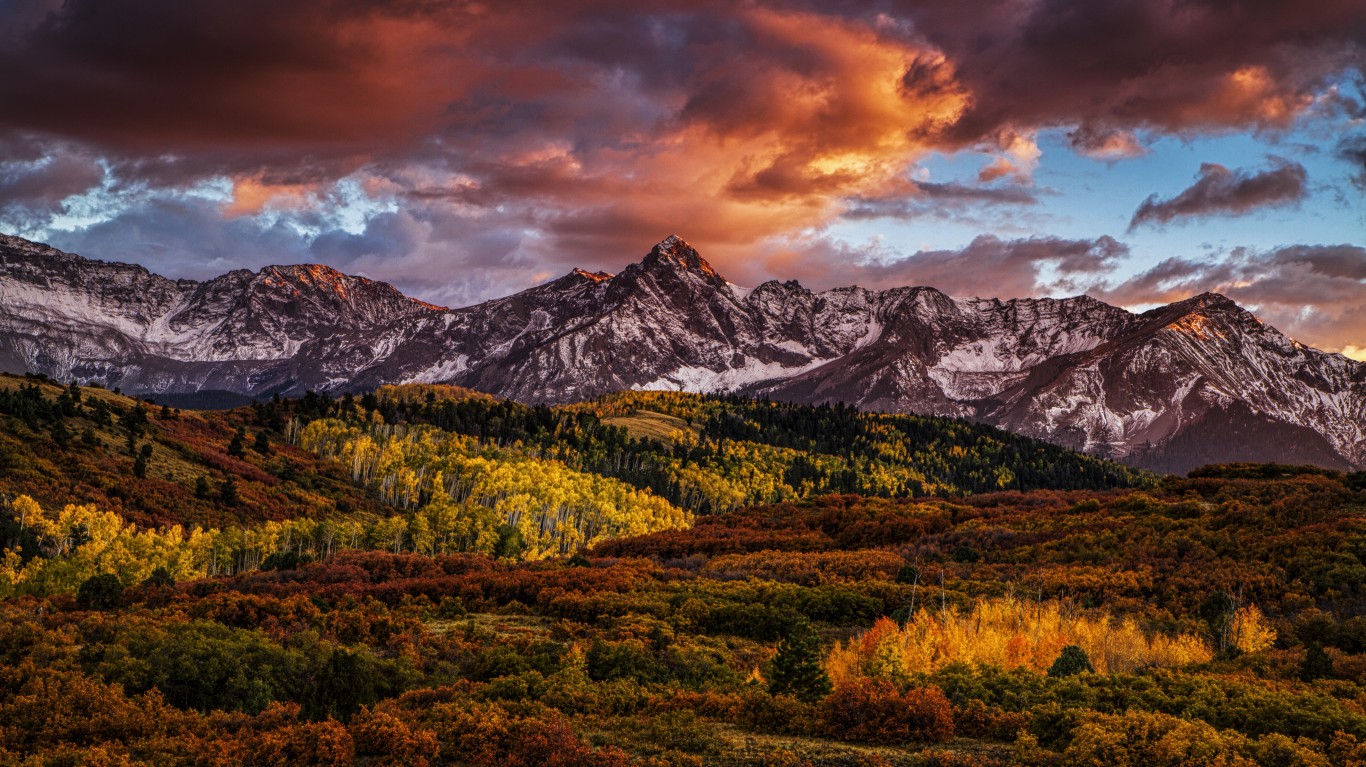
23. Colorado
> Candy and chocolate shops: 3.2 per 100,000 people
> Most popular candies: Twix, Milky Way, Hershey Kisses
> Sugar industry economic output: $802.0 million (17th highest)
> Population under 14 years: 18.7% (24th highest)

22. New York
> Candy and chocolate shops: 3.3 per 100,000 people
> Most popular candies: Sour Patch Kids, Candy Corn, Hot Tamales
> Sugar industry economic output: $2000.0 million (4th highest)
> Population under 14 years: 17.3% (10th lowest)
[in-text-ad-2]

21. Pennsylvania
> Candy and chocolate shops: 3.3 per 100,000 people
> Most popular candies: Skittles, M&M’s, Candy Corn
> Sugar industry economic output: $6000.0 million (the highest)
> Population under 14 years: 17.1% (9th lowest)
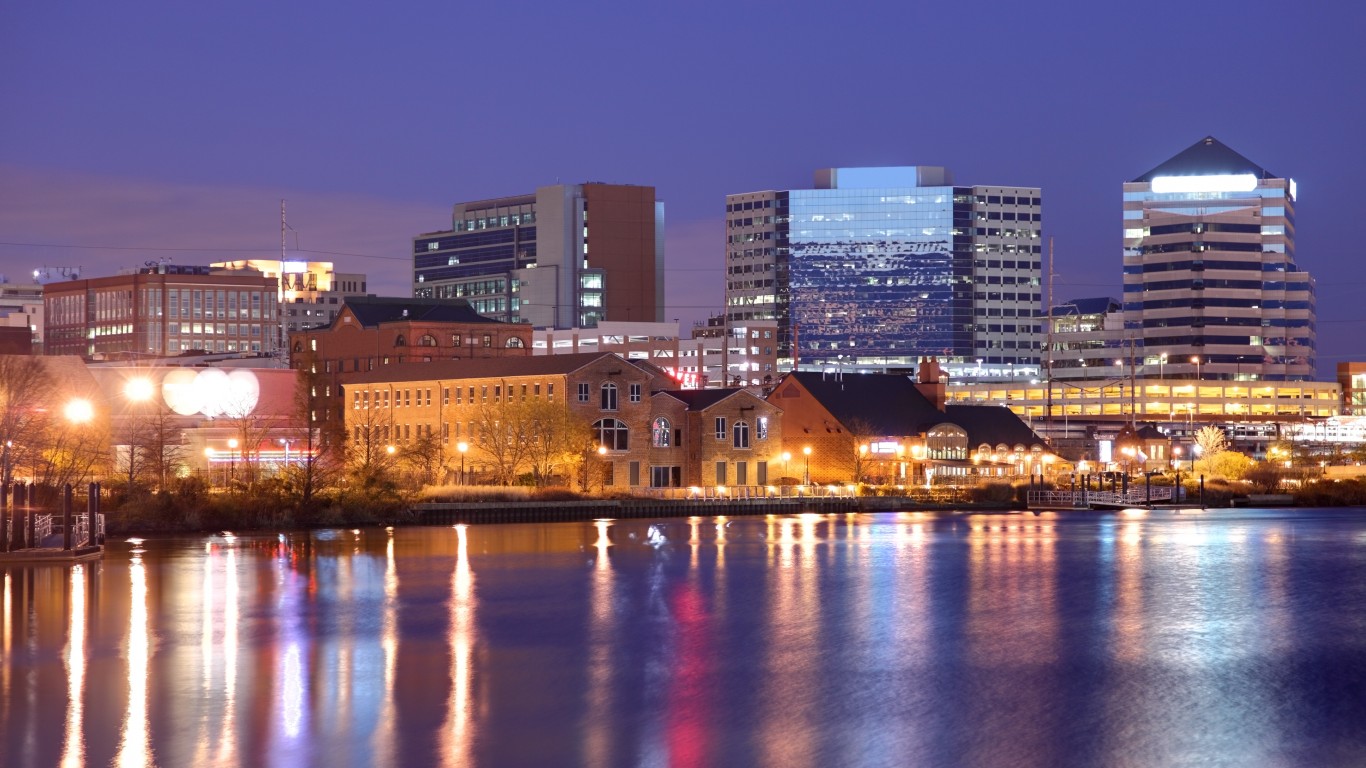
20. Delaware
> Candy and chocolate shops: 3.3 per 100,000 people
> Most popular candies: Life Savers, Candy Corn, Skittles
> Sugar industry economic output: $58.0 million (5th lowest)
> Population under 14 years: 17.6% (12th lowest)
[in-text-ad]

19. Nevada
> Candy and chocolate shops: 3.3 per 100,000 people
> Most popular candies: Candy Corn, Hershey Kisses, Tootsie Pops
> Sugar industry economic output: $201.0 million (16th lowest)
> Population under 14 years: 19.0% (21st highest)

18. Missouri
> Candy and chocolate shops: 3.4 per 100,000 people
> Most popular candies: Milky Way, Dubble Bubble Gum, Almond Joy
> Sugar industry economic output: $948.0 million (16th highest)
> Population under 14 years: 18.8% (23rd highest)

17. Tennessee
> Candy and chocolate shops: 3.4 per 100,000 people
> Most popular candies: Tootsie Pops, Skittles, Salt Water Taffy
> Sugar industry economic output: $1000.0 million (8th highest)
> Population under 14 years: 18.6% (25th lowest)
[in-text-ad-2]
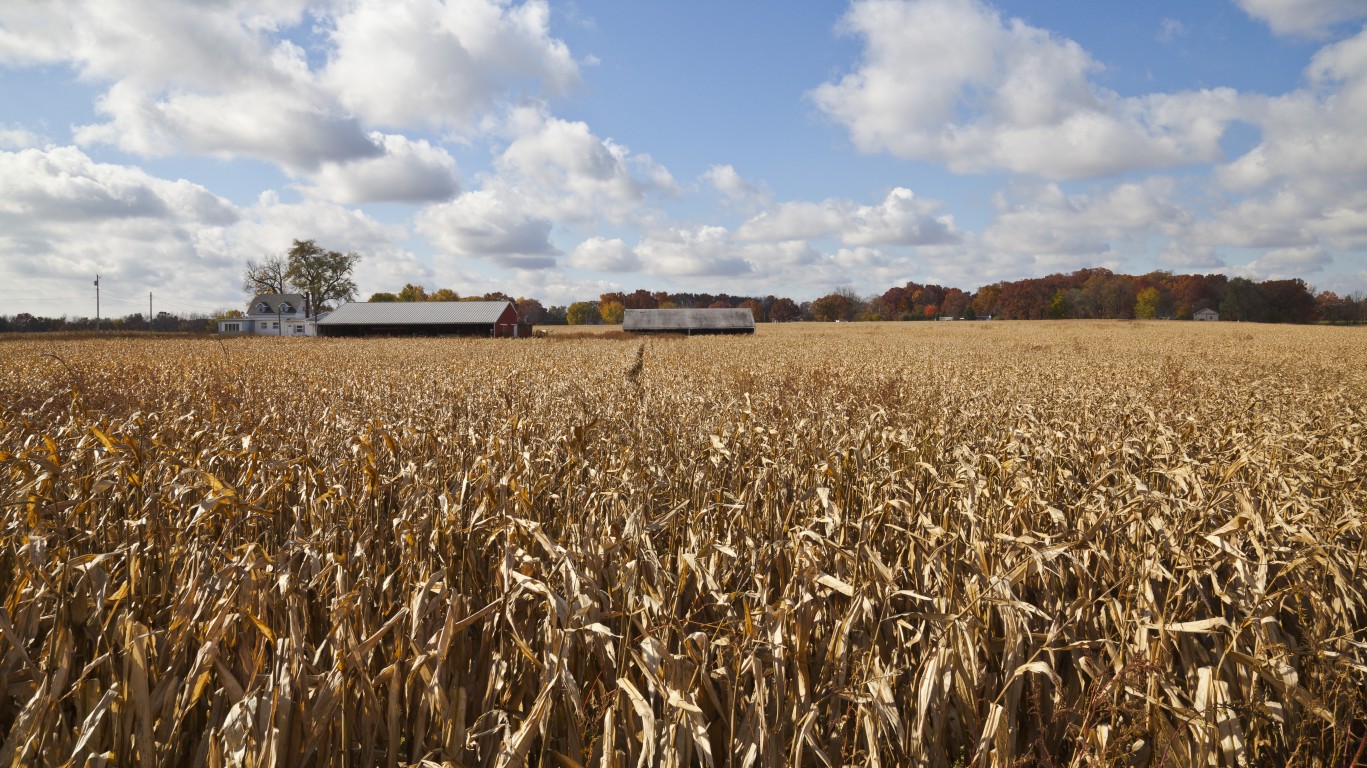
16. Indiana
> Candy and chocolate shops: 3.4 per 100,000 people
> Most popular candies: Hot Tamales, Starburst, Jolly Ranchers
> Sugar industry economic output: $1000.0 million (8th highest)
> Population under 14 years: 19.5% (14th highest)

15. Ohio
> Candy and chocolate shops: 3.4 per 100,000 people
> Most popular candies: M&M’s, Blow Pops, Starburst
> Sugar industry economic output: $2000.0 million (4th highest)
> Population under 14 years: 18.4% (20th lowest)
[in-text-ad]

14. Alaska
> Candy and chocolate shops: 3.5 per 100,000 people
> Most popular candies: Twix, Blow Pops, Milky Way
> Sugar industry economic output: $91.0 million (10th lowest)
> Population under 14 years: 21.1% (4th highest)

13. Illinois
> Candy and chocolate shops: 3.5 per 100,000 people
> Most popular candies: Kit Kat, Sour Patch Kids, Snickers
> Sugar industry economic output: $6000.0 million (the highest)
> Population under 14 years: 18.7% (25th highest)
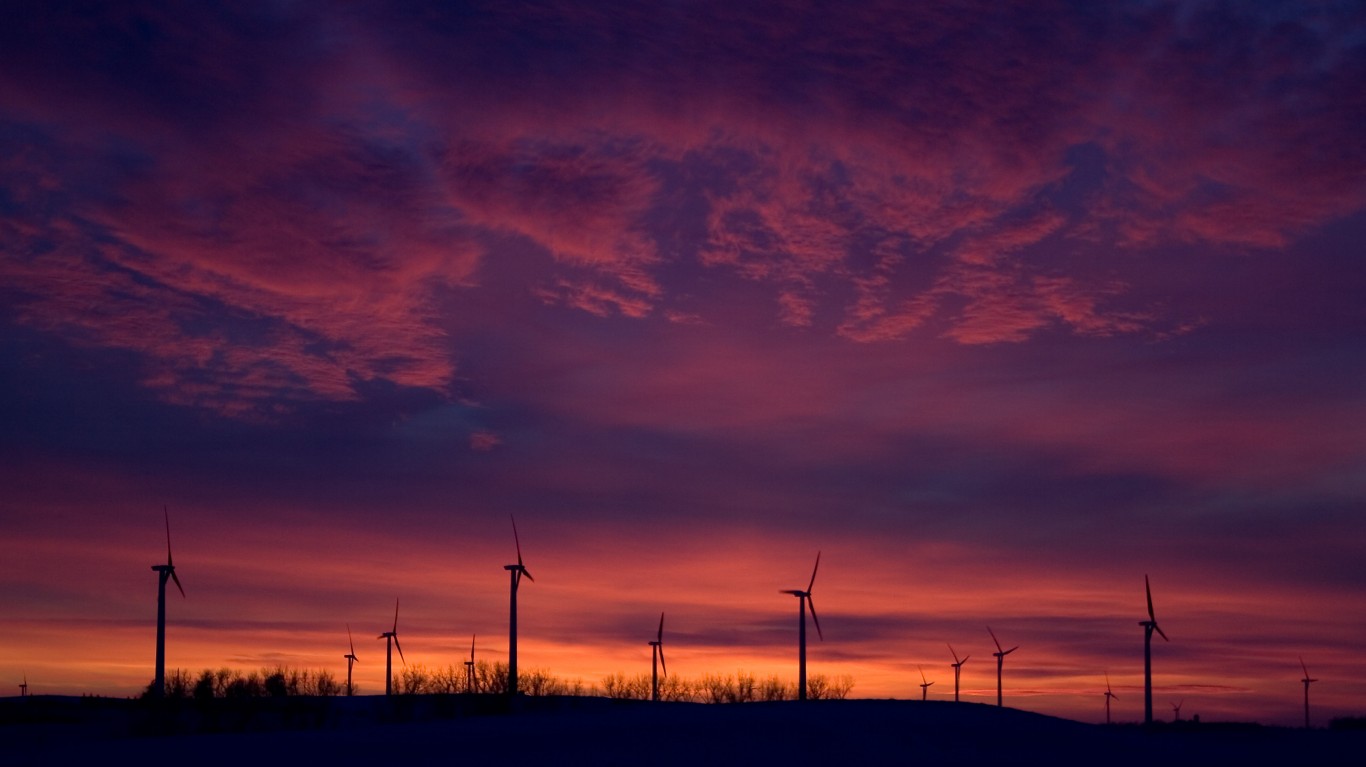
12. Minnesota
> Candy and chocolate shops: 3.7 per 100,000 people
> Most popular candies: Tootsie Pops, Skittles, Candy Corn
> Sugar industry economic output: $644.0 million (19th highest)
> Population under 14 years: 19.4% (17th highest)
[in-text-ad-2]
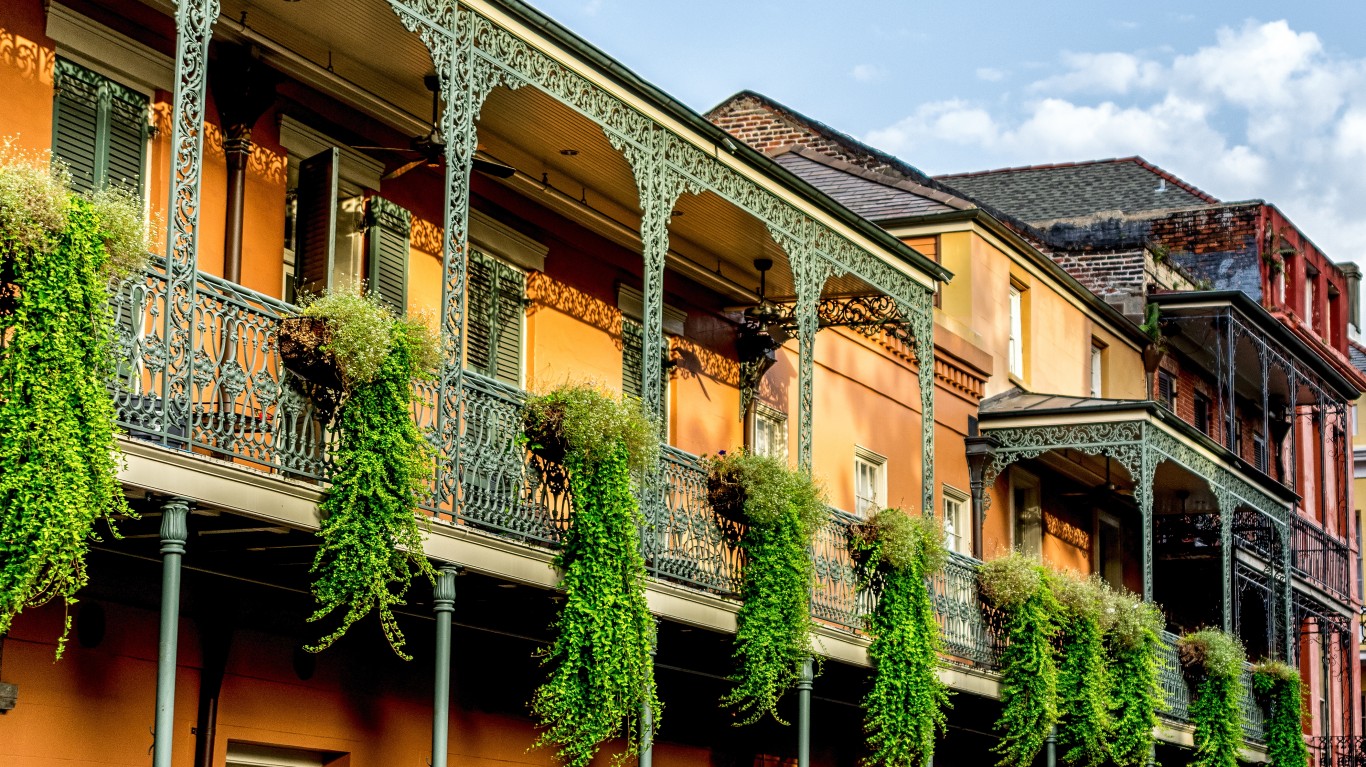
11. Louisiana
> Candy and chocolate shops: 3.7 per 100,000 people
> Most popular candies: Lemonheads, Reese’s Cups, Blow Pops
> Sugar industry economic output: $487.0 million (22nd highest)
> Population under 14 years: 19.7% (12th highest)

10. New Mexico
> Candy and chocolate shops: 3.7 per 100,000 people
> Most popular candies: Candy Corn, Jolly Ranchers, Milky Way
> Sugar industry economic output: $80.0 million (8th lowest)
> Population under 14 years: 19.4% (16th highest)
[in-text-ad]

9. California
> Candy and chocolate shops: 3.8 per 100,000 people
> Most popular candies: Skittles, M&M’s, Assorted Salt Water Taffy
> Sugar industry economic output: $6000.0 million (the highest)
> Population under 14 years: 19.0% (20th highest)
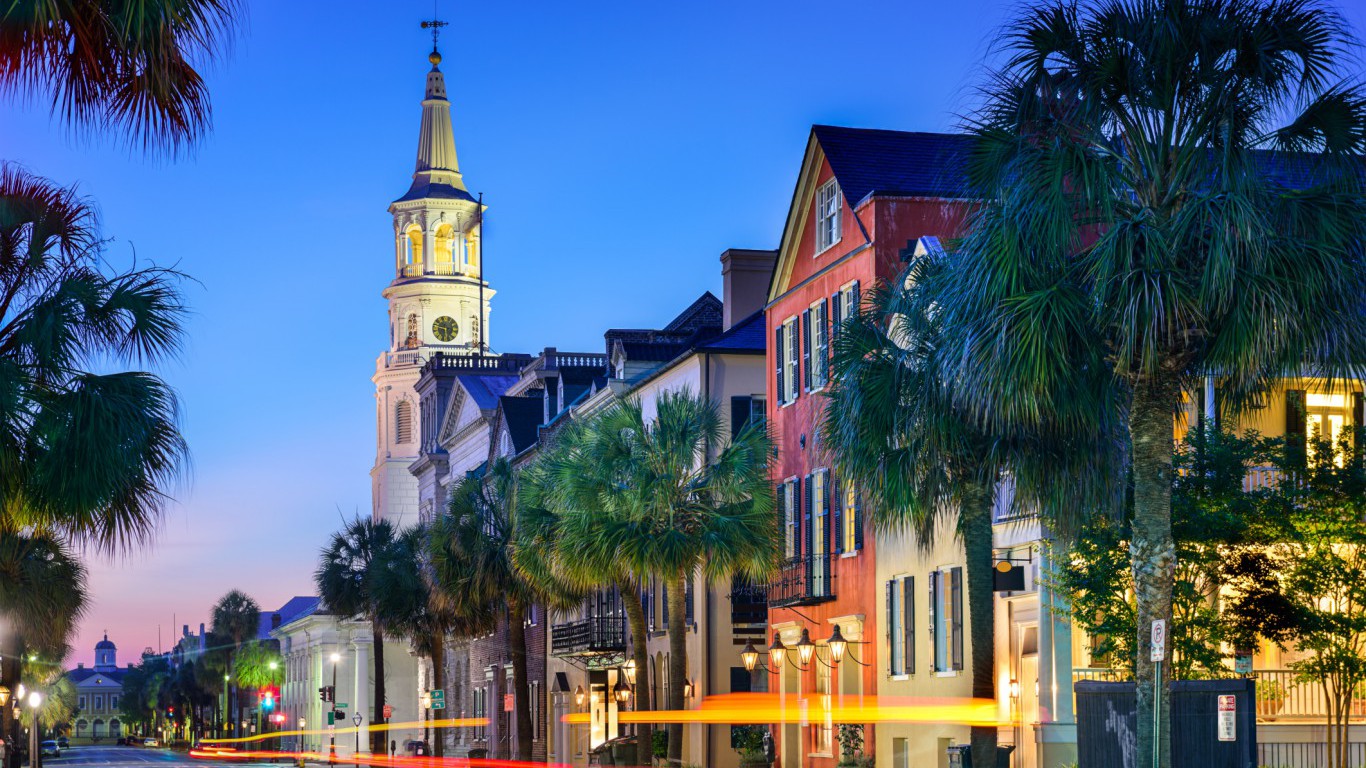
8. South Carolina
> Candy and chocolate shops: 4.5 per 100,000 people
> Most popular candies: Skittles, Candy Corn, Hot Tamales
> Sugar industry economic output: $154.0 million (15th lowest)
> Population under 14 years: 18.2% (16th lowest)

7. Utah
> Candy and chocolate shops: 4.5 per 100,000 people
> Most popular candies: Jolly Ranchers, Candy Corn, Tootsie Pops
> Sugar industry economic output: $407.0 million (25th highest)
> Population under 14 years: 24.9% (the highest)
[in-text-ad-2]

6. Maine
> Candy and chocolate shops: 4.9 per 100,000 people
> Most popular candies: Sour Patch Kids, Starburst, M&M’s
> Sugar industry economic output: $135.0 million (14th lowest)
> Population under 14 years: 15.5% (2nd lowest)

5. New Hampshire
> Candy and chocolate shops: 5.0 per 100,000 people
> Most popular candies: Starburst, M&M’s, Snickers
> Sugar industry economic output: $276.0 million (23rd lowest)
> Population under 14 years: 15.6% (3rd lowest)
[in-text-ad]

4. Oregon
> Candy and chocolate shops: 5.0 per 100,000 people
> Most popular candies: Reese’s Peanut Butter Cups, M&M’s, Candy Corn
> Sugar industry economic output: $256.0 million (21st lowest)
> Population under 14 years: 17.5% (11th lowest)

3. Washington
> Candy and chocolate shops: 5.5 per 100,000 people
> Most popular candies: Salt Water Taffy, Tootsie Pops, Skittles
> Sugar industry economic output: $1000.0 million (8th highest)
> Population under 14 years: 18.6% (24th lowest)

2. Vermont
> Candy and chocolate shops: 11.5 per 100,000 people
> Most popular candies: Milky Way, Skittles, M&M’s
> Sugar industry economic output: $226.0 million (20th lowest)
> Population under 14 years: 15.5% (the lowest)
[in-text-ad-2]

1. Hawaii
> Candy and chocolate shops: 12.0 per 100,000 people
> Most popular candies: Skittles, Hershey Kisses, Butterfinger
> Sugar industry economic output: $433.0 million (23rd highest)
> Population under 14 years: 18.2% (15th lowest)
Detailed Findings
Even though the candy industry has been under siege over concerns about obesity and diabetes, America is still consuming lots of sweets.
America’s love affair with candy means huge profits for companies that manufacture, distribute, and sell candy. The National Confectioners Association, the trade group for the candy industry, recently released a report detailing the industry’s economic impact on the American economy. The Washington, D.C.-based group estimates the industry’s economic output at $44.6 billion. According to the NCA, the industry directly employs 54,000 workers and supports another 550,000 jobs nationwide. There are jobs in the confectionery industry in every state.
With consumer confidence high, candy makers have reason to be optimistic about candy sales for Halloween. The National Retail Federation forecasts consumers will spend $2.6 billion on candy this holiday. According to the NRF, 95% of those celebrating Halloween will purchase candy.
In the United States, there does not seem to be any consensus on the biggest-selling candy. According to the blog CandyStore.com, Skittles and Candy Corn are the top-selling candies in five states, followed by Reese’s Peanut Butter Cups (four states), and Jolly Ranchers and Milky Way (three states). Venerable sweets such as Twix, Snickers, Tootsie Pops, and M&M’s are the top choices in various states and will find their way into Halloween bags this year.
“Spicy candy is having a resurgence,” said Clair Robins, a spokeswoman for CandyStore.com. ”It has to do with Mexican candy’s increased popularity and availability. Also, the younger generation is more attracted to big flavors and colors than previous generations who may have preferred rich and smooth flavors. Hot Tamales, Sour Patch Kids, Skittles, Swedish Fish are not what kids raised in the 80s typically considered top- tier candy bounty. Reese’s Cups and Snickers bars ruled the day back then. Those big names are still very much powerhouses, but the stuff with a sour or spicy kick or vivid sugary flavors is what the kids [today] like.”
In 2015, chocolate maker Hershey Co. published a report on which states consumed the most sweets per capita, and the top state was Utah. Utah’s prolific sweets consumption has had an impact on obesity measures. According to a report from the Robert Wood Johnson Foundation, Utah has the nation’s lowest obesity rate among those between the ages of 10 and 17, and the fifth-lowest rate among adults at 25.3%. However, that percentage of obese adults has risen dramatically. In 2000, 17.3% of adults in the state were considered obese, and in 1990, that figure was just 9%.
Consumption of candy remains strong even as organizations such as the World Health Organization and the World Cancer Research Fund have issued reports about the dangers of too much sugar consumption and how it contributes to childhood obesity.
Methodology
To identify the states spending the most on sweets, 24/7 Wall St. reviewed the number of candy stores (defined as stores selling candy and / or chocolate) per 100,000 people for each state’s largest cities (cities with a population over 100,000). If a state did not have at least five cities with a population above 100,000, then the largest five cities were considered in order to give each state proper representation.
Data on candy stores by city was obtained from Yelp!. Population data was obtained from the U.S. Census Bureau’s 2016 American Community Survey, and are 5-year averages. Each State’s top three candies was obtained from CandyStore.com, and is for 2018. Each state’s candy economic output came from the National Confectioners Association’s 2018 economic impact report.
Want to Retire Early? Start Here (Sponsor)
Want retirement to come a few years earlier than you’d planned? Or are you ready to retire now, but want an extra set of eyes on your finances?
Now you can speak with up to 3 financial experts in your area for FREE. By simply clicking here you can begin to match with financial professionals who can help you build your plan to retire early. And the best part? The first conversation with them is free.
Click here to match with up to 3 financial pros who would be excited to help you make financial decisions.
Thank you for reading! Have some feedback for us?
Contact the 24/7 Wall St. editorial team.
 24/7 Wall St.
24/7 Wall St. 24/7 Wall St.
24/7 Wall St. 24/7 Wall St.
24/7 Wall St. 24/7 Wall St.
24/7 Wall St.

